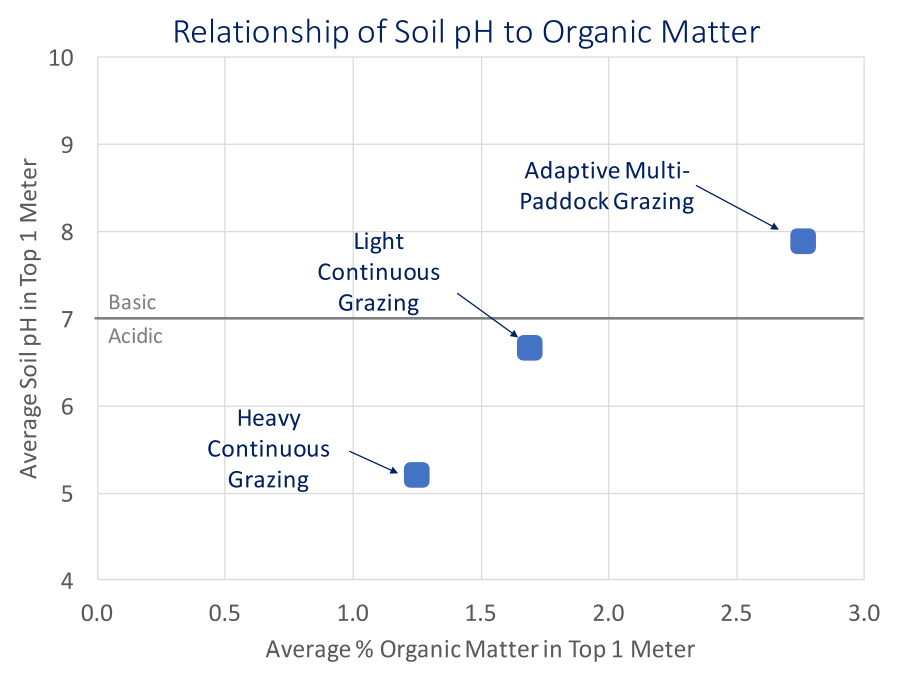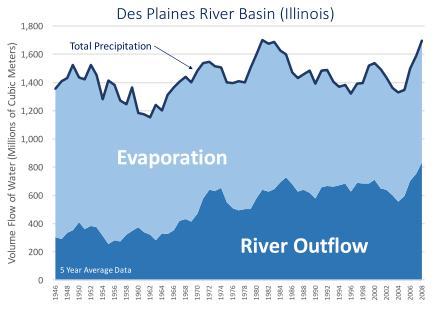By Allen Williams & Russ Conser
Last month we talked about your role in managing grazing to keep the carbon-centric circle of life cycling. This month, we’ll dig deeper into how the cycling of carbon in this circle leads the cycling of water. The fact that water is really important for growing plants is not news, but let’s unpack this a bit to provide a deeper understanding of this virtuous cycling in action. Stated simply, where carbon goes, water follows.
Water in the plants
Carbon and water grow plants with energy from the sun and minerals from the soil. This growth requires the splitting of water to make use of its hydrogen. But it also requires the transpiration of water. In short, to get the CO2 from the air, plants give up water to the air. They do this through their stomata, which are tiny holes in the leaves that coordinate this exchange.
Cool season plants use a process called C3 photosynthesis that requires abundant water and lots of CO2 in the air to be most efficient. You are familiar with C3 plants as “cool season” plants, but you may not realize that they must transpire lots of water per unit of plant growth. As the weather gets warmer, they can’t transpire water fast enough to keep growing, so their productivity drops dramatically.
C4 plants, which you know as “warm season” plants, conduct their water/CO2 exchange more efficiently than C3 plants. Roughly 60% of grass species are based on this C4 process. Warm season species are so prevalent among grasses because their ability to grow in the drier inland areas of the continents gave them a competitive advantage over trees and other forms of vegetation.
What is even more interesting is that warm season grasses are tightly bound with the emergence of grazing animals. Historically, C4 grasses provided greater nutrition to grazing herbivores, who cycled large fractions of those nutrients back to the soil in manure in a manner that kept the circle of life always on the move.
Water in the soil
This growing of grasses both uses water and emits it into the air. The ability of grass to pump carbon into the ground enables it to pump more water out of the ground and into the air.
The plant “leaks” a cocktail of simple sugars and complex molecules that act as both feed and instructions for soil microbes. The sugars provide the microbes with the energy they need. The complex molecules signal the microbes, telling them what each plant has on its grocery list for the day.
As the microbial population of bacteria and fungi grow to fulfill this shopping list of nutrients from the soil, they “fluff-up” the soil, creating additional porosity and permeability that allows water to percolate in and out. Not only does this enable the plant to get the water it needs to grow, but the water also plays an important role in dissolving key ions into forms the plants can uptake. Even more, the carbon-rich organic matter changes the surface chemistry, enabling capture and accessible retention of nutrient ions.
Data from three ranches with similar parent soils in Mississippi (Figure 1), and employing three different grazing management styles, shows the transition from soils with depleted organic matter to soils enriched with OM can be associated with very large soil pH changes from acidic to basic. Solutions and surfaces in basic soils can hold cations such as calcium and magnesium. In acidic soils, these cations more freely run away with the water.

The implications of these changed soil conditions for improved water infiltration and retention extend way beyond just better plant growth. Recent work by Texas A&M University showed that a change in grazing management practices from heavy/continuous to a multi-paddock system decreased surface runoff by nearly 50%. This water not only stays on the property to help grow more grass, but substantially reduces potential flooding downstream.
But this is what makes the water cycle even more interesting: The water that stayed on the land and resulted in the growing of grass ends up back in the air from whence it came.
Water in the Air
People understand our rivers of liquid water because we can see them and follow them with our eyes. But the same basic dynamics are true of the atmospheric rivers of water vapor. Water transpired in the process of growing a plant is put back into the air, where it can come down again somewhere else to help another plant grow. If it didn’t stay in the soil to help a plant grow, it must have run off downstream.
Inspired by the work of a friend, we recently downloaded the precipitation and river flow data for the well-documented Des Plaines River basin just west of Chicago. Figure 2 illustrates how precipitation is related to river flow since 1946. The data shows that, although rainfall has varied, it hasn’t changed much overall.
What has changed is that roughly twice as much water leaves the basin via the river instead of being evaporated back on the land.
This simplistic analysis is not able to distinguish between how much of this runoff is attributed to concrete-covered surfaces vs. degraded soils. What is clear from other data is that the river flow rate increase is a result of both. When the Des Plaines River experiences significant flooding, it’s a reminder that much of the pain is self-induced.

Many people do not know that the evaporation of water (or any liquid) consumes vast amounts of energy. Your air conditioner uses electrical energy to evaporate water in cooling the environment. Forages use solar energy to do the same thing. The process of growing grass transpires water that literally cools your pasture. If we couple this with adaptive grazing where we intentionally leave at least 50% of plant leaf volume after every grazing period, we provide additional protection to soil moisture and soil temperature.
Our data shows that on days when the ambient temperature reaches the mid-90s or higher, soil temperature where grass is grazed down tight can be 110-140 degrees F. But where plenty of grass cover is left and plants are still actively transpiring, soil temperatures can be in the mid-70s to high-80s.
This is a stark contrast, and your livestock literally feel it. They require less shade and water consumption to perform well. This can be compared to standing on asphalt on a hot afternoon vs. standing in a foot or two of water. We want to get off the asphalt quickly, but are comfortable in the shallow water. When our livestock lay down to rest after a heavy grazing, they put even more of their body surface in contact with the cool, moist soil that is providing a radiator effect that cools them.
Water that runs off amounts to cooling that never happened. These numbers add up at the scale of large landscapes. Gathering a bit more data about how much solar energy falls on the Des Plaines River basin, we estimate that from 1944 to 1952, 32% of the total incoming solar energy in the basin would have been used to evaporate water. From 1994 to 2003, only 23% of this solar energy was used for evaporation. Said differently, 9% of the total incoming solar energy that 60-70 years ago was consumed by evaporating water now just bounces around in the air as heat.
Water in the cycle
So, here’s the point: keep the carbon cycling. The carbon cycle will pull water with it.
Growing plants create more organic matter-rich soil that holds more water that grows even more plants. Soils richer in organic matter also make better use of that additional water. Soils that hold more water release less downstream and keep a key part of the atmospheric air conditioner running. This mitigates the problem of too much water downstream.
Water follows carbon. Your grazing management decisions can have a very material impact on just how well this happens on your farm or ranch.
Dr. Allen Williams is a founding partner in Soil Health Consulting, LLC. Russ Conser is co-founder of Standard Soil and works in regenerative agriculture. His contact information is 832-474-4764 or email him at russ.conser@standardsoil.com.
